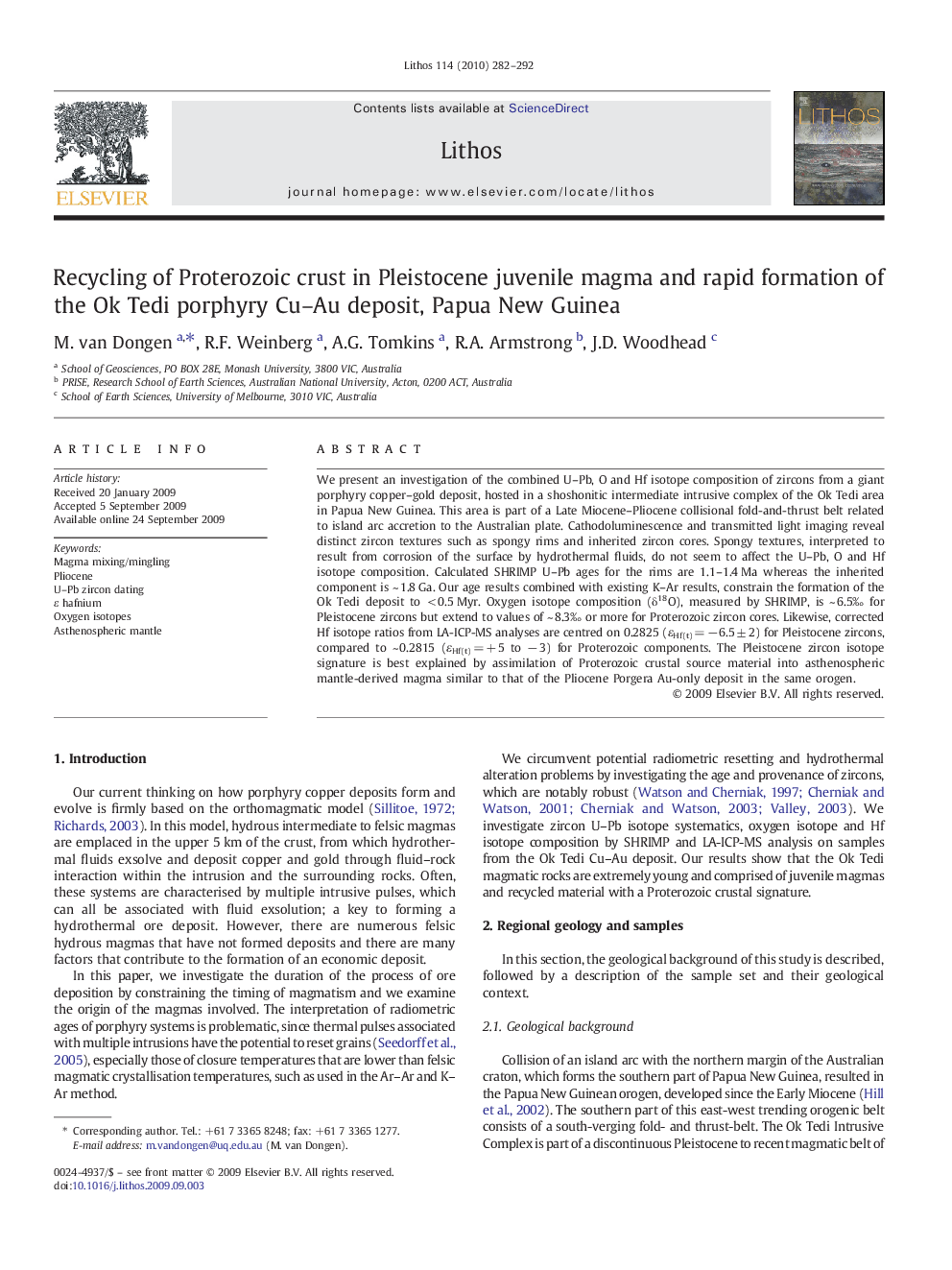| Article ID | Journal | Published Year | Pages | File Type |
|---|---|---|---|---|
| 4717155 | Lithos | 2010 | 11 Pages |
We present an investigation of the combined U–Pb, O and Hf isotope composition of zircons from a giant porphyry copper–gold deposit, hosted in a shoshonitic intermediate intrusive complex of the Ok Tedi area in Papua New Guinea. This area is part of a Late Miocene–Pliocene collisional fold-and-thrust belt related to island arc accretion to the Australian plate. Cathodoluminescence and transmitted light imaging reveal distinct zircon textures such as spongy rims and inherited zircon cores. Spongy textures, interpreted to result from corrosion of the surface by hydrothermal fluids, do not seem to affect the U–Pb, O and Hf isotope composition. Calculated SHRIMP U–Pb ages for the rims are 1.1–1.4 Ma whereas the inherited component is ~ 1.8 Ga. Our age results combined with existing K–Ar results, constrain the formation of the Ok Tedi deposit to < 0.5 Myr. Oxygen isotope composition (δ18O), measured by SHRIMP, is ~ 6.5‰ for Pleistocene zircons but extend to values of ~ 8.3‰ or more for Proterozoic zircon cores. Likewise, corrected Hf isotope ratios from LA-ICP-MS analyses are centred on 0.2825 (εHf(t) = − 6.5 ± 2) for Pleistocene zircons, compared to ~ 0.2815 (εHf(t) = + 5 to − 3) for Proterozoic components. The Pleistocene zircon isotope signature is best explained by assimilation of Proterozoic crustal source material into asthenospheric mantle-derived magma similar to that of the Pliocene Porgera Au-only deposit in the same orogen.
